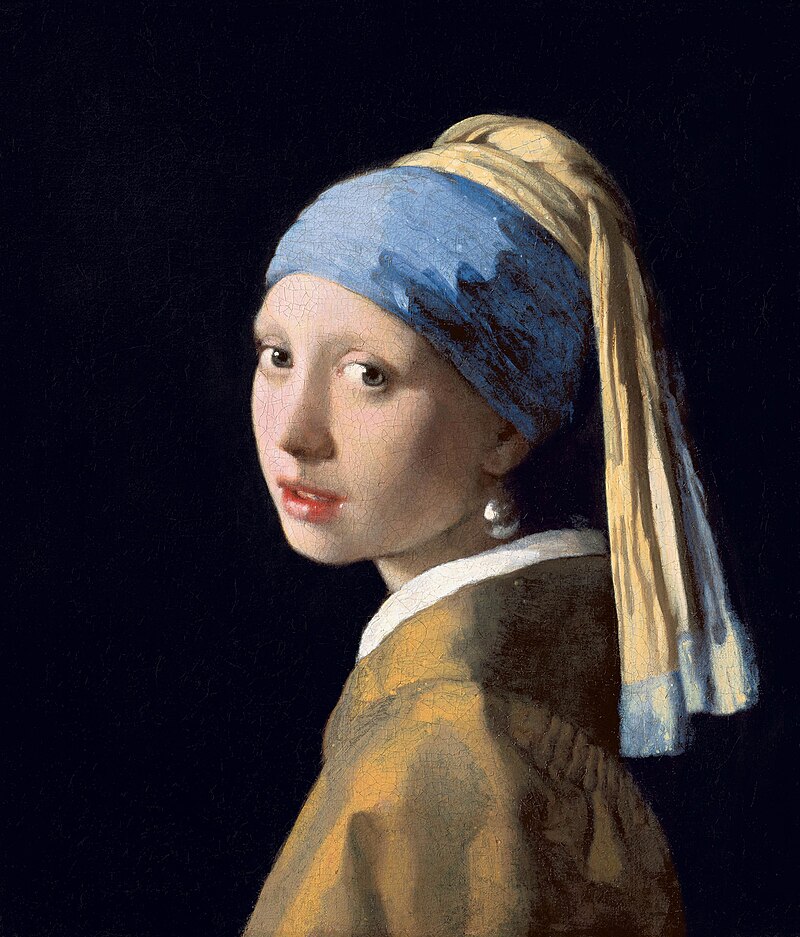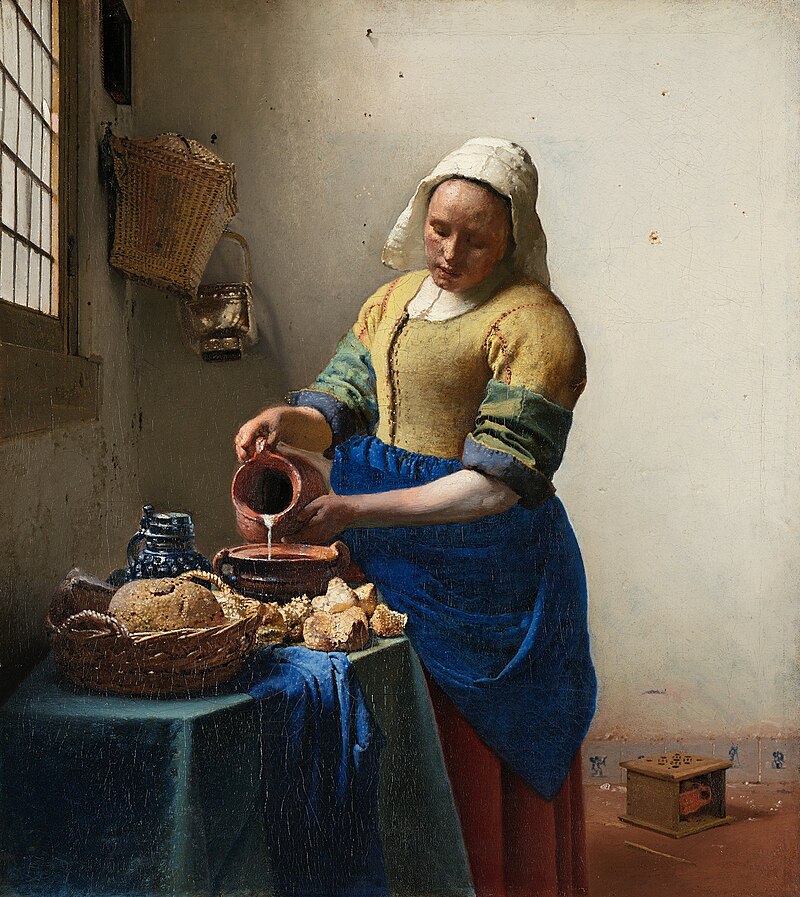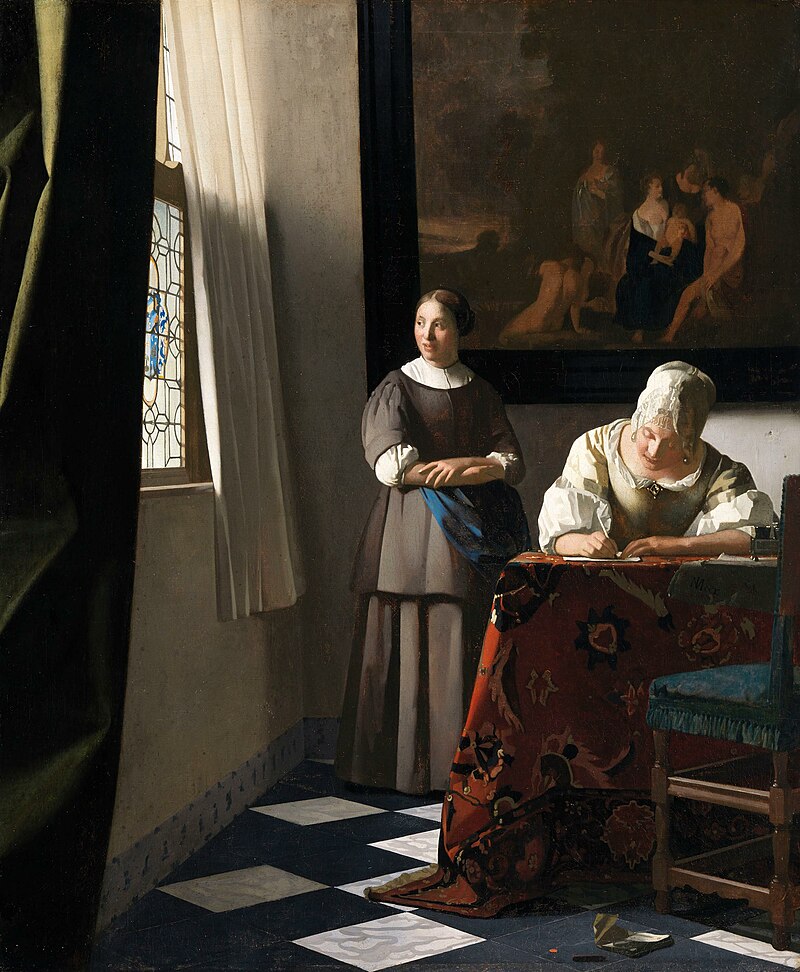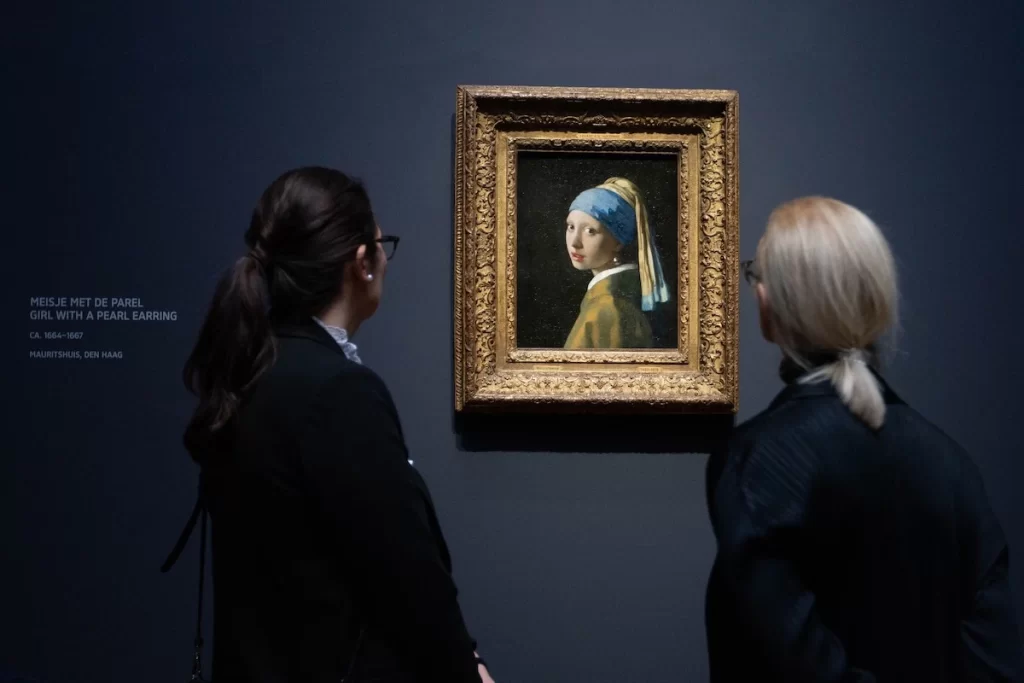Johannes Vermeer may be the artist praised as a master with few paintings. A few domestic interior paintings of middle-class people made him renowned and legendary, and count him as one of the Dutch Golden Age’s greatest painters with Rembrandt. Vermeer was an art dealer when he was recognised as a painter, which made his primary earning, and he painted slowly with great care and costly pigments. He was not a painter for earnings but for delight or saturation.
The theme is not a matter for Vermeer: ‘The Milkmaid’, ‘The Girl with the Wine Glass’, ‘The Music Lesson or A Lady at the Virginals with a Gentleman’, ‘Girl with a Pearl Earring, Girl with the Red Hat’, ‘Mistress and Maid’, ‘The Art of Painting or The Allegory of Painting’, ‘The Astronomer’, ‘Lady Writing a Letter with her Maid’, ‘The Allegory of Faith, ‘Lady Seated at a Virginal’, anything can be a topic, Vermeer changed that with great care. When we look into Vermeer’s worldview, consideration of the subject, the way it was depicted on the canvas, intense devotion to the subject and portrayed it that way, which made him a master. Most paintings are directly conveyed; some have symbolic features with explicit allegorical connotations.

According to Scholars, Vermeer started his career as a history painter in 1653, and in 1656, he signed his first painting as his genre. Between 1657 and 1675, Vermeer only paints up to forty-five, and only thirty-six are available now. The number of paintings in a period shows Vermeer’s style and meticulous way of moving from subject to subject, and the most significant thing is supposed to be that he had one or more wealthy patrons willing to pay more money to paint slowly but precisely. The substantial aspect related to Vermeer’s life and work is the carefully created and affluent sense; his paintings have delighted and hypnotised viewers over the centuries.
As we understand from his wealthy patronage, Vermeer was famous in his time, lapsed into anonymity after his death like many other painters and reinvented in the 19th-century aesthetical taste and modern times imagination. Most art scholars don’t have any doubt about his painting originality and refinement that place him as the ‘greatest’ ever, even though he never painted a ‘self-portrait’ to understand his physical appearance; according to the data, Vermeer was nicely qualified in his profession to belong to an artists’ guild and was revered enough by his associates to be twice nominated guild leader.

One of Vermeer’s paintings’ most significant and noted elements are light and other optical effects, which he was called ‘the master of light.’ He used to create subtleties of visual articulation through geometry, composition, and meticulous proficiency in the laws of visual philosophy. Some scholars from Neurosurgery, such as Waleed A. Azab, Daniel M. Prevedello, and Ricardo L. Carrau, argued that ‘he most probably used a camera obscura in observing the views he painted and was likely influenced by the Dutch scientist and lens maker Antonie van Leeuwenhoek [1632-1723], who lived in the same city of Delft during Vermeer’s life.
According to them, Vermeer’s paintings are uniquely characterised by a profound optical realism that created a compelling sensation of objects being seen, not simply depicted, and paintings exhibit a certain photographic quality. According to the scholars of Neurosurgery, Vermeers’ paintings show some visual similarities between neuro-endoscopic images, namely light and colour effects, as well as the rules of perspective.
Vermeer is known to have managed the relationship between light and shadow, which he learned from several layers of experiments and practices, including, as argued by scholars, ‘observing images produced by optical devices of his time. A window and the light that comes through that window is the significant element in Vermeer’s interior scenes. According to the scholars, ‘strategically placed anatomical windows are created to precisely and intensely illuminate the objects within an intracranial chamber unveiling their visual details.

The time is crucial for Vermeer’s artwork; the classical thought about art was broken, and the genre (scenes of everyday life) is prominent, and he poetically depicts the everydayness, the air of reflections fascinating the visual feast. Vermeers’ artwork brings the ideal nature of everyday life of the people into or replaces the classical paintings about ‘King’, priests and religious ideas. They, including Vermeer and contemporaries, place ordinary people’s lives in Western art’s limelight and contextualise them into a broader canvas of 17th-century thought.
The way the light entered the room and the characters in Vermeer’s paintings were astonishing and fascinating for centuries. For viewers and art lovers, the lights and glory of shadows are pleasing, enduring to time and space. The visual effects of the artist’s body of work are more peculiar than we imagine, and he uses emerging techniques to paint the light and shadow play perfectly.
There is no written record about the artist, and the cultural, social, and political situation in seventeenth-century Europe, mainly Dutch, is subtly visible in his works. According to scholars, seventeenth-century Delft was a venerable city with a long history and distinguished past. Its thriving Delftware factories, tapestry weaving ateliers, and breweries attracted travellers because of its prosperity and charm. Why art flourished there is clear from this charming prosperity.

‘Just as Vermeer embarked upon his career in the early 165-08, the artistic character of Delft was undergoing enormous changes. It seems that the importance of history painting in Delft and The Hague around 1650 inspired the young artist to work in this manner, particularly since art theorists placed the depiction of biblical and mythological scenes at the highest echelon in the hierarchy of painting. However, Vermeer’s early paintings Saint Práxedis Christ in the Home of Mary and Martha and Diana and Her Companions have no clear stylistic ties to Delft’s indigenous traditions. He appears to have drawn upon the work of artists from other centres, primarily Amsterdam and Utrecht in Holland, but also Italy and Flanders. Vermeer may have become acquainted with the work of these artists through travels during his apprentice years, through his father, who bought and sold paintings, or through his mother-in-law’s collection of Utrecht paintings’, Arthur K Wheelock, JR write in the brochure of National Gallery Of Art, Washington.

Krispin Joseph PX, a poet and journalist, completed an MFA in art history and visual studies at the University of Hyderabad and an MA in sociology and cultural anthropology from the Central European University, Vienna.





